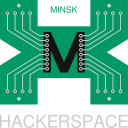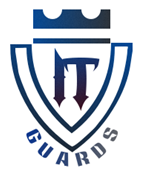sharism-interview-en
Interview
Maksim ‘max_posedon’ Melnikau – Interviewer
Wolfgang Spraul – CEO of Hong Kong startup company Sharism Ltd.
Please note that I think this interview is really very important for us
and copyleft hardware. There is a strong and long-term thinking free
software scene in Russia and neighboring countries like Belarus.
Unfortunately the customs in those countries has a history of being tough
on imports, so it’s very hard for those Russian free software fans to
participate in many free & open hardware efforts. But I believe we will
get there.
Generic
Could you intoduce yourself a little? (who is answering and small description who you are)
I am Wolfgang Spraul, freedom fighter :-) More seriously, I’m a software
engineer who felt that hardware built using the same principles as free
software could be far superior to traditional proprietary hardware.
I’m 35 years old, living in China trying to make copyleft hardware a
technical and business reality. Addicted to Starbucks.
What is sharism? What is Qi-hardware? What is Ben Nanonote?
Qi hardware is copyleft hardware (the only copyleft hardware group I’m
aware of). Copyleft hardware is hardware that is build out of free
knowledge, using the same principles as free software. It’s a work
in progress, some things like NAND and memory chips, LCDs will not be
copyleft for a long time. At least we have started working on the CPU
with the Milkymist project
Sharism Ltd. is a small Hong Kong startup company with about 5 employees. We are manufacturing copyleft hardware in China, meaning that we build
hardware without vendor lock-ins. All our knowledge and information is
shared, we are only using easily exchangable components, production testing
software is GPL licensed, etc. We work like an OEM/ODM so theoretically
can build any product but practially it makes sense to work on a standard
technology base, around Ingenic XBurst CPUs in our case. We are evaluating
devices such as GPS devices, picture frames (wall computers), digital
cameras, phones, even power and water meters.
The Ben NanoNote is a portable clamshell pocket computer, like a small
electronic dictionary. 126g including battery. It runs 100% free software,
right now for example the 2.6.32 Linux kernel. We have submitted patches
upstream for 2.6.34, so maybe in a few months we have a kernel.org kernel
running on the device, supporting 100% of the hardware.
It has a 336 MHz MIPS-like CPU, 32 MB memory, 3 inch TFT, no USB host,
no Wi-Fi, no Bluetoot.
How (and when) you decide organize your company? Do people right when name you as “OpenMoko fork”?
The company Sharism Ltd. was started in November 2009, when it became
clear that other small companies would be interested to join the Qi
copyleft hardware project, and we wanted a separate small company as
an Asian manufacturer.
Some of us worked for Openmoko in the past, but copyleft hardware is a
new idea and I don’t think Openmoko ever participated in copyleft hardware
projects.
Questions connected with open source hardware developing ==
What is the biggest problem when you doing open hardware?
Finding customers that understand the long-term vision and buy our rather
simple hardware today (such as the Ben NanoNote), and help us advance the
state of free software on this simple hardware today. We have sold about
800 Ben NanoNote so far.
How open hardware can brings money?
Exactly like proprietary hardware, by selling high quality hardware, building
a strong brand, customer loyalty through good service, etc.
Could you give example of math calcations how hardware company can become successful? Device price/revenu/sold count, company size.
Very hard because there are one-time expenses and per-unit expenses. There is
also signifiant potential to make money with service, accessories, etc.
We spent about 180,000 USD total cash to make the first 1000 Ben NanoNote. So
even if we sell 1000 at 99 USD, we still cannot make money. Maybe if we can
sell 2000 or 3000 things would look better.
Open software gives ability to share development – new devices can have big software base from start. What open hardware gives to hardware startapp?
Same. Currently in hardware, many things are done over and over again. Sharing
them would be far better, produce better products at better prices and faster
time to market. There are huge inefficiencies in the hardware world that
could be improved by using our company philosophy, sharism :-)
Qi-specific
How many people works in Qi? Who you are (Company structure and organization)?
5 full-time people. In such a small team we are all helping each other, the
structure is loose, we all have our unique expertise we try to bring into
the team.
What was your last goal which you successfully passed? What is your next?
Last goal was to sell 400 Ben NanoNote by end of March, which we passed.
Next goal is to sell 1000 Ben NanoNote by end of July.
Software is very important, how software for your products developed?
For the most part we rely on the free software community, we have no money for
paid software development. Especially the OpenWrt community was very helpful,
now we also see some interest from jlime.com and some Debian developers.
[Daniel A. Nagy @ ePoint System] What kind of devices (phones, tablets, netbooks?) are you planning to release over time? Do you have a projection for the release schedule?
We can build anything based on Ingenic XBurst CPUs. We are studying advanced
NanoNotes, GPS devices, picture frames, phones, FPGA hacking boards, power and
water meters. If you want to build anything like that, maybe minimum quantity
of 5000 units or so, we can build it copyleft hardware style.
[Daniel A. Nagy @ ePoint System] To what extent do you plan to make different devices compatible with one another as far as hardware parts and software is concerned?
Commonality is very important. To measure commonality, we look at the most
complex parts first, especially the software. So for example we look at
the Linux kernel, OpenWrt distribution, etc. We look at compatibility from
a software perspective. On the hardware side the most complex parts are
the Ingenic XBurst CPUs, and Xilinx FPGAs.
h6.Have you got any responces/comments from big companies?
Nothing serious.
Hardware-specific
[Daniel A. Nagy @ ePoint System] A question on modularity: would it be prohibitively expensive in terms of money, battery life or weight to make all parts usable in and by themselves, like having the screen, the keypad, the touch-screen, the 3G module, etc. connect to the motherbord using USB (not necessarily via standard connectors, just signal-wise)?
Modularity doesn’t work. The hardware industry is about investing a large
one-time amount to achieve high integration and low per-unit costs.
Theoretically everything can be integrated into one silicon die. The
production costs of a silicon die may be as low as 50 cents, if you don’t
look at the huge one-time investments that are needed to get there.
Ben Nanonote specific
Power usage. How long ben can works?
We got reports from users saying 6-15 hours, depending on the workload.
[Richard_Ferlow @ habrahabr.ru] What user can do on NanoNote?
Our latest OpenWrt image is 0507. What works today are console applications
like vi or mutt, or the SDL-based music payer GMU (but it can only play
Ogg Vorbis, not the patented MP3).
For a list of OpenWrt applications and their status on Ben NanoNote see
Applications
Then you can also run Debian
and the JLiMe distribution has also started supporting the Ben NanoNote
http://jlime.com/mw4/index.php/Faq_nanonote
However it will take some time to make applications really work well on
the device, as opposed to just successfully building them.
[jeka1202 @ habrahabr.ru] Why screen size much smaller than top part of Ben NN? [threesixzero @ habrahabr.ru] Will next nanonote have bigger resolution display?
The screen is a standard size, 3.0 inch TFT, typically that size is also
found in digital cameras. Another common size is 3.5 inch but that wouldn’t
fit. 3.2 inch exists but is too rare and expensive. Custom sizes of color
TFTs are totally unreachable for a small company like us.
Mostly when we look at innovations we look at free software, free technology
first. So for example the TFT in the Ben NanoNote has an Ilitek ILI8960
drive IC, with open datasheet
So when we think about improving the screen, we try to find a better screen
with the same drive IC, or with an improved (next version) Ilitek drive IC.
So that we can quickly reuse a stable and upstream Linux driver. If we could
choose between two new screens, one is bigger/transflective/etc. but with
a closed datasheet and proprietary driver, and the other one is more basic,
maybe only 2.8 inch, but with an open datasheet and upstream driver, we would
choose the more basic TFT. We are innovating in freedom, we want to have
fun with the technology and modify it to suit our customers, without asking
for permission.
Maksim ‘max_posedon’ Melnikau




































